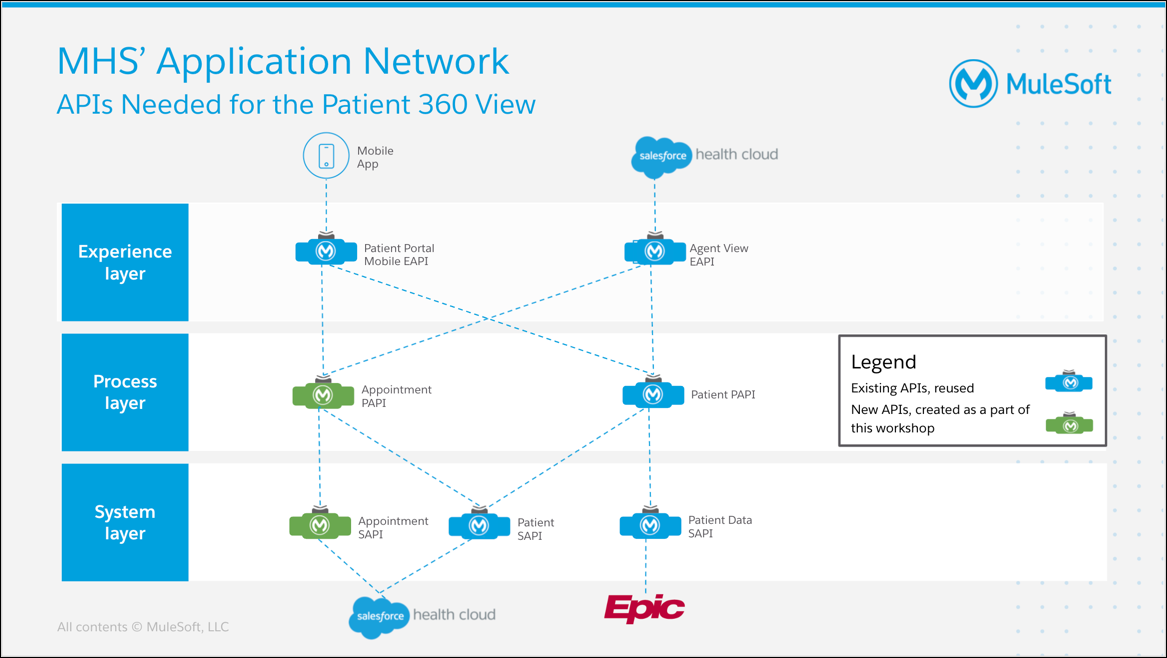
Workshop Overview

Introduction
Makana Health System (MHS) is a large health system, serving more than 5 million patients across 20 hospitals, 90 outpatient facilities, and more than 200 other community access points across clinics, doctors’ offices and walk-in clinics. They employ a staff of more than 18,000 healthcare professionals.
MHS has faced increasing challenges managing the needs of millions of patients across the hundreds of physician touch points each year. Coupled with the challenges of meeting the CMS interoperability rule, the shift from fee-for-service to value-based care, and evolving patient expectations there is increased pressure on healthcare providers to improve the patient experiences they provide. MHS needs digital capabilities, such as online-scheduling and a patient portal, to deliver the type of care its patients expect in and outside of the hospital.
A goal for MHS is to improve the patient experience by:
-
Surfacing a single view of the patient to MHS staff in real-time.
-
Improving patient experience through on-demand access to insurance, scheduling and billing information.
-
Delivering omnichannel services to patients while reducing call center costs.
-
Enabling virtual care through telemedicine, aftercare instruction and personalized care recommendations for patients
Your Assignment: Create a Patient 360 View
The immediate need that you are assigned to address is to get patient data out of Epic and create a patient 360 view that also includes data from Salesforce Health Cloud, which will be used by MHS staff throughout the organization. When MHS is ready to begin their Patient Portal initiative, they will be able to reuse the APIs from this patient 360 initiative.
Fortunately, MHS has an existing MuleSoft implementation that is used to support other initiatives within the organization. After a discussion of your assignment with the lead MuleSoft architect you have discovered that an Application Network supported by MuleSoft is already in place. From your discussion it has been determined that it will be easy to deliver a Patient 360 View by reusing several existing APIs that are already in production. You will only need to add or reuse the following APIs to deliver your project:
-
Review the existing System API that accesses data in Epic. Note that this exercise will be demoed by your instructor.
-
Create a new System API that will be used to create an appointment in Salesforce Health Cloud.
-
Create a Process API to synchronize appointment data between Epic and Salesforce Health Cloud.
-
Use Salesforce Health Cloud to test an Experience API by creating a new appointment via the Patient 360 view that MuleSoft enables.
|
The following diagram illustrates a portion of the application network that will be used to support the Patient 360 project.
Completing the Lab Exercises
Ensure that you have completed the tasks identified in the Workshop Setup section, then proceed to the Lab 1: Search for an API in Exchange lab exercise.





